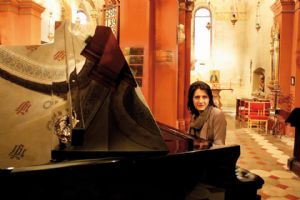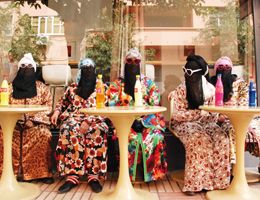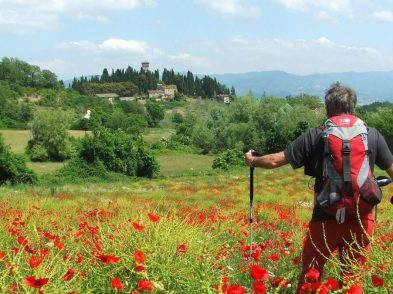One of the most famously celebrated and strange games in the tradition of Italian sports will be played once again this June in Florence. The hair-raising Calcio Storico Fiorentino dates back to the fifteenth century, has few rules and can be extremely violent (see TF 145 and 165). As the teams from the four quarters of Florence kick, punch, bite and wrestle their way to victory, complete with medieval pantaloons, dust, blood and plenty of sweat, tensions can run extremely high in the cheering Florentine crowd. The only remaining historic Florentine sport, Calcio Storico was once just one of a number of violent, and, to modern sensibilities, somewhat bizarre, outdoor sports that the city has known.
With origins that date back to the ancient Greeks and Romans, the Gioco del Pallone was not your average game of football. Popular since the fifteenth century, the game originally consisted of flinging a leather ball over a line on the ground, but over time transformed into a more dangerous competition. It became characterized by ‘the ball by cuff,’ a kind of sleeve formed out of wood and shaped to the hand and wrist of the player, fearfully lined with rows of teeth and spikes along the exterior. The ball of leather was flung and hit with the giant cuff of spikes and used in defense if opposing players got too close for comfort. In late nineteenth-century Florence, despite calls to ban the dangerous game, two ball courts were built, one near Porta alla Croce and the other in the Cascine park. The game has not been played in the city for several decades, but a simplified version continues in Chiusi Scalo (SI) to this day. Each year there is a grand tournament between the five contrade, which includes women’s matches and those for children, as well as, rather surprisingly, a pig race. See www.ruzzidellaconca.itfor more on this.
Forget the football and bring out your chariot! The Palio dei Cocchi was a chariot race, not unlike those that used to take place at the Circus Maximus in Rome, but was run in the considerably smaller piazza Santa Maria Novella in Florence. Between 1563, when the race was founded by Cosimo I de’ Medici, and 1858, it was held every year on June 23, the eve of the celebrations of San Giovanni, Florence’s patron saint. The obelisks still standing today in the piazza originally marked the limits of the race circuit. Representing the four quarters of the city, four competing chariots, each drawn by two horses, had to make three heart-stopping laps around the obelisks. Crowds of visitors gathered to cheer on the competitors each year and to see who would receive the winning prize of a velvet cloth.

Between the seventeenth and eighteenth centuries, piazza della Signoria was the location for the Giostra del Saracino, a riveting, gut-wrenching match between two knights wielding long wooden spears and galloping around on horses. The aim: to remove the competition with brutal force. In one hand, the knight would clench a flail, a medieval instrument resembling a whip with three strings, each holding balls of lead, in the other, a shield for protection. Once held in Florence, it is still played today in Arezzo and Sarteano, but the lead balls have since been replaced with much softer leather ones.
Mentioned in Dante’s Paradiso, the Palio dei Barberi horse race has extremely old origins. It was traditionally held on June 24, the feast day of San Giovanni, and was run with a particular breed of Arabian horses, the fiery-tempered Berber. The race originally started from via Ponte alle Mosse, which takes its name from the race (mosse means ‘start’), and from the nearby Palazzo Corsini nobles could watch the race from a specially built terrace. The race then followed a course through the streets of Florence to finish at porta alla Croce, in present-day piazza Beccaria. Through a complex system of colored smoke, mirrors placed on rooftops and messengers, the news of the winner was communicated immediately to the grand duke sitting in the viewing stands. The coveted prize for the winner was a valuable cloth decorated with the Florentine lily. The horse track was ruined in 1858, when several sites in Florence were demolished, and the ancient tradition was never revived. However, a reminder of it remains to this day in the Florentine dialect: the expression ‘correre come un berbero’ (‘run like a Berber’).
The 2013 Calcio Storico matches will take place in piazza Santa Croce on June 15 (the Rossi team from Santa Maria Novella versus the Bianchi from Santo Spirito), June 16 (the Verdi of San Giovanni versus the Azzurri of Santa Croce) and June 24 (the final). The games are preceded by a historical procession with music, the players and city dignitaries. See www.calciostoricofiorentino.it for more information.







